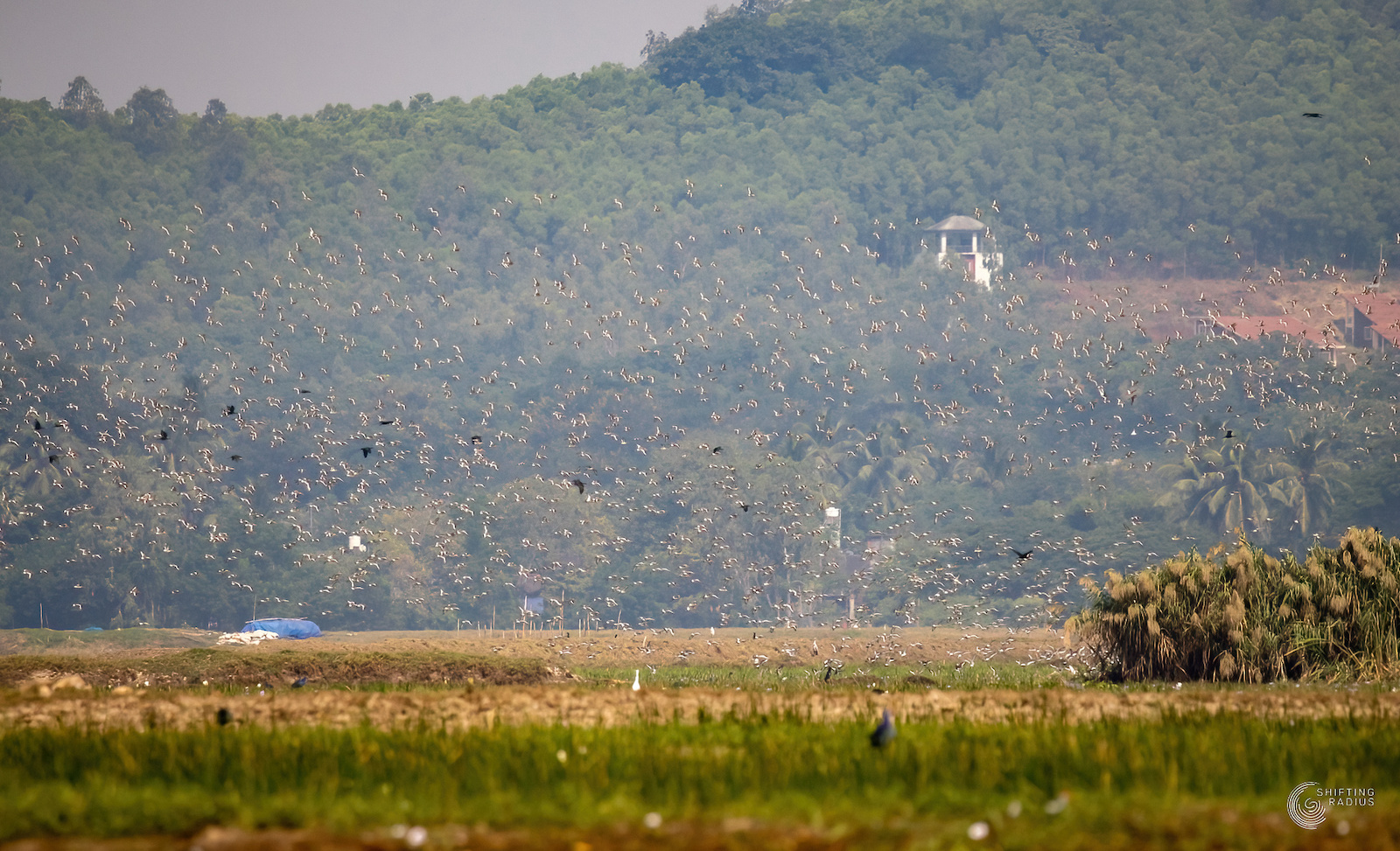So, obviously it needs two posts, may be three. The first one, this one, will be about our sessions at Mangalajodi. The next one, will be about Bhitarkanika.
The last time I was at Odisha was for a wedding. I wasn’t drinking (recovering from jaundice), I wasn’t into bird photography, I wasn’t even sure if I will visit this state again. The one thing I remember clearly last time around was the incessant honking (yes, worse than namma ooru). Well, guess what? That’s not changed one bit. Honking is a habit. Tell your driver to honk less, the reply will be “yeh log hat the nahin na, isiliye karna padtha hai”.
We had booked a car for our entire trip and Pintu, other than the involuntary honking, was very welcoming and pleasant right through. Giving us trivia along the way and also contributing to some our conversations. Like I had no clue that in ‘Dravida, Utkala Banga’, Utkal was Orissa.
Before you think this is some GK about the state, I shall dive straight to our first destination. Mangalajodi is an olden village in the khordha district at the northern edge of Chilika lake (1,100 square km). The vast wetlands attract tens of thousands of visitors – feathered and humankind every year. Between November to March, this wetland hosts over 1.5 lakhs birds of close to 170 species from all over the world.
We stayed at the community-owned wildlife conservation venture’s Mangalajodi ecotourism center. About a kilometer from Chilika lake, this is a perfect place to stay as the boating sessions start as early as 6 AM.
We had 4 sessions and our guide, Rusiya (guessing that’s the spelling) made sure we were treated to some of the breathtaking action one can find in these waters.
Apart from some of the lifers for me personally, such as the Northern Pintail, Black-tailed Godwit, Long-toed Stint, Pied Stilt, Ruddy Shelduck, Wood Sandpiper, Common Snipe, and Asian pied Starling (these are updated here), what one must watch out for are action shots. Between Whiskered Terns diving to fish to the Waders looking for a meal, one of the absolute delights is to wait patiently for the Purple Heron’s piercing either a large fish or if you are lucky, hunting some water snakes. This is where your guide is so critical. They are trained to spot and head to that spot in a flash. We were lucky to spot and manage some shots of these at least thrice in our sessions. To do justice, I have a third post for just that here.
Here are some of the other captures from Mangalajodi.
If you have a good sunrise without cloud cover, you can expect more bird activity.

The Northern Pintails are fun to shoot in flight.


Black-tailed Godwits are good subjects in backlit situations.


The Stilts – Black-winged, and Pied are found mostly foraging for food.


While we are focusing on a few Glossy Ibis, Rusia and the boatman is focused on Purple Heron kills.



Sometimes, it’s just a false alarm. The Heron ends up picking up a leaf while trying to pierce through a fish. If you have missed the earlier link of its kills, click here.

So, we wait. Again.

The Gray Herons aren’t as exciting in terms of action. Apparently, they dont hunt as as well their cousins.

Intermediate Egrets do pick up small fish and make a meal out of it.


Between Whiskered Terns fishing and them being stationary, I’d go with stationary. Near impossible to get a decent shot of them diving to fish.




Gray-headed Swamphens are vegetarians and their primary diet are lotus flowers.


Here’s a poser. The more I tell myself I don’t want to click this one, the more they pose. So, here’s one for the album of a Little Cormorant.

When the Lesser Whistling Ducks in large numbers, whistle, can be quite a cacophony.



